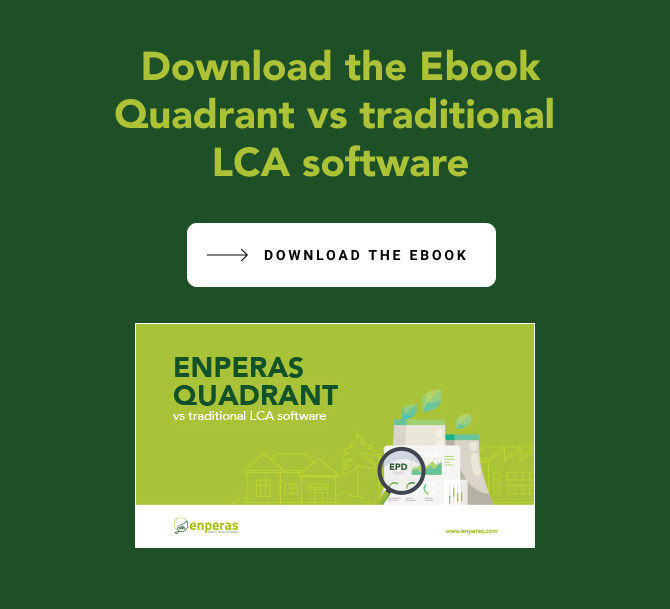An Environmental Product Declaration (EPD) is a third-party verified document that communicates complete and standardized information about the environmental impact of products during their full life-cycle.
The EPD is the communication sheet, its foundation is a lifecycle assessment (LCA)
The LCA allows assessing your product’s environmental performance over its entire life-cycle. It considers your full value chain, from material extraction over manufacturing, packaging, its use stage, and finally to its end of life. As a result, hotspots are identified and the most relevant environmental improvements can be planned.
Environmental footprint
An EPD is a type III environmental declaration that is compliant with the ISO 14025 and EN15804 standards. A type III environmental declaration can be created, registered, and published in the framework of a program, such as the IBU in Germany, INIES in France, BRE in the UK, MRPI in the Netherlands, B-EPD FOD in Belgium, etc…. EPDs published are publicly available and free to download. A product can thus be specified by its environmental footprint.
An EPD consists of two documents:
- LCA background report, a systematic and comprehensive summary of the LCA project to support the third-party verifier when verifying the EPD.
This report contains confidential product information and is not part of public communication.
- Public EPD document that presents the ecological footprint of the product, describes it, and declares its technical performances
The EPD for a product does however not imply that the declared product is environmentally superior to alternatives. It does show that all its environmental impacts have been assessed which is the first step towards eco-design and lower impact society.
Interesting links for further reading:







